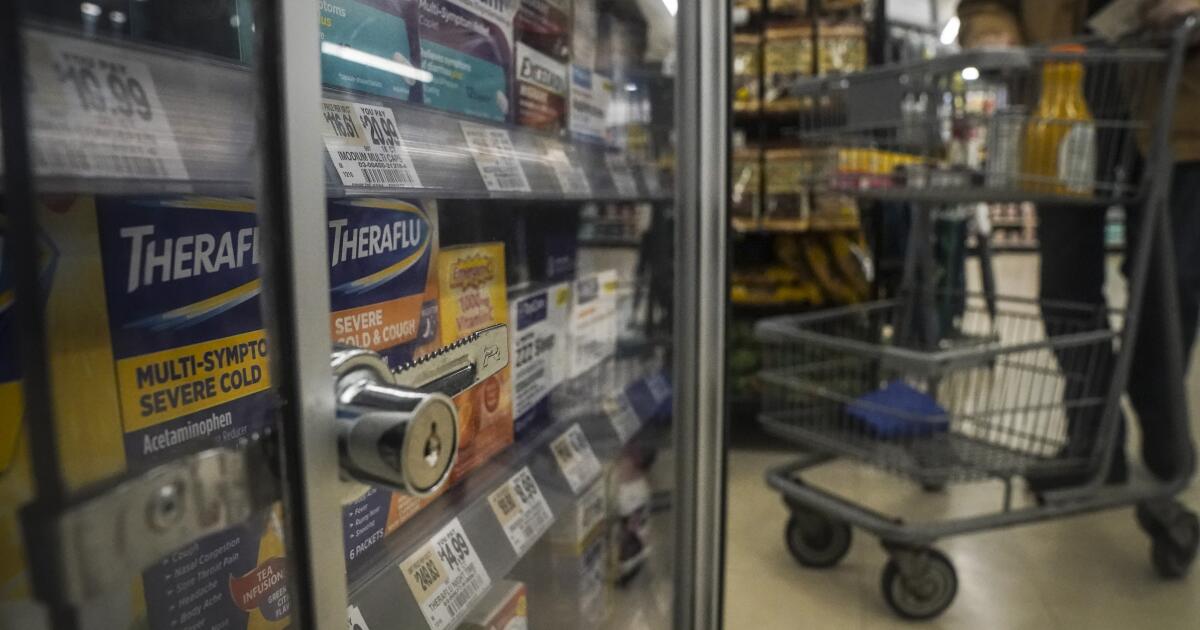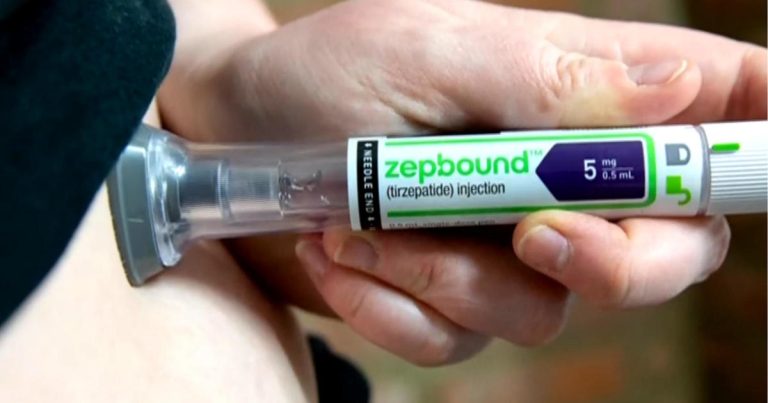
As viral videos of brazen smash-and-grab thefts play on a loop across social media, and stores lock away everything from razors to baby formula, public demand for decisive action to combat retail crime has seemingly reached a fever pitch.
Amid the outcry, Proposition 47, a decade-old law aimed at reducing incarceration rates for nonviolent offenses, has once against become a focal point of policy debate.
The proposition, a sweeping referendum approved by 59 percent of California voters in 2014, reclassified most nonviolent crimes involving property or drugs from felonies to misdemeanors.
Proponents argue that not only did the law do what it was supposed to do — reduce prison populations, recidivism and racial disparities in arrests — but it had no impact on violent crime and only minimal impact on property crimes.
Critics aren’t buying it. They content the law has fueled a surge of lawlessness. And as concern over rising crime grows, a new initiative to roll back the proposition has emerged. Formally known as “The Homelessness, Drug Addiction, and Theft Reduction Act,” the law would increase penalties for certain drug and theft crimes, as well as create a new court process — treatment-mandated felonies — for certain drug possession crimes.
The initiative, supported by District Attorney Summer Stephan, 14 of San Diego County’s 18 mayors, and more than a dozen other elected officials across the state, has collected 420,000 of the 550,000 needed to get on November’s ballot.
“I believe in many of its elements — of treatment, of compassion, of giving people first, second and third chances,” Stephan said of Proposition 47. “What I’m asking is to just reform it, so it works for everyone. So it balances the rights of those who want to commit crime with the rights of victims and the community.”
Other, similar measures have been proposed. Gov. Gavin Newsom in January unveiled half a dozen initiatives designed to combat retail and auto theft, sidestepping the oft maligned proposition entirely. And last month, Assembly Speaker Robert Rivas unveiled the California Retail Theft Reduction Act, which could be passed without a ballot measure to overhaul Prop. 47.
Central to the debate is a persistent question: Is the energy fueling the rollback supported by available data?
Proponents point to increases in commercial burglaries and robberies in counties across the state between 2019 and 2022, and cite the decisions of Target and some other big retailers to close select stores because of theft. Opponents say recent data is far from conclusive, with crimes such as shoplifting increasing in some places and decreasing in others — and contend that the fervor is fueled more by anecdotes than evidence.
“I think what a lot of people on the left are worried about is voters are just gonna get exasperated if people don’t take some action, and they’re gonna go too far, and move us back to where we were in the ‘90s, of sending lots of people to state prison for long sentences,” said Thad Kousser, a political science professor at UC San Diego.
What’s being considered?
The Homelessness, Drug Addition, and Theft reduction initiative would allow for stronger penalties against those engaged in the trafficking of hard drugs and for repeat offenders of retail theft. It will still give first and second chances to those who commit theft and possess hard drugs to be treated with a misdemeanor. However, a third conviction could result in a felony, even if a theft crime involves an amount worth $950 or less.
The act also created treatment-mandated felonies. If a person with two or more prior drug convictions is found possessing certain drugs, including fentanyl, that person could be charged with this new class of felony, rather than a misdemeanor. Those who complete treatment would have charges against them dismissed. Those who aren’t successful in treatment could be required to serve three years in state prison.
Stephan, flanked by local mayors last week, contended it was never the intention of Proposition 47 to excuse repeat offenders. “It was to give a very legitimate and appropriate chance to, you know, people who episodically commit low level crime.”
The initiative will also allow aggregation of multiple thefts to reach the $950 threshold to charge a felony theft and creates harsher penalties for fentanyl drug dealers whose actions lead to overdose deaths.
The state’s Legislative Analyst’s Office estimates the initiative could increase the state’s criminal justice system costs by hundreds of millions of dollars, and local criminal justice system costs by tens of millions of dollars. If the measure’s penalties reduces crime, some of these costs could be avoided, the office said.
Although there’s been widespread local support for act, San Diego Mayor Todd Gloria, who said he supports amending Proposition 47 this year, he has not yet backed the initiative.
“As chair of the bipartisan Big City Mayors coalition, (Gloria’s) been engaged with a number of top leaders around the state to determine the best approach to meaningfully reform Prop. 47 among competing proposals and build consensus behind the measure that will best accomplish the objectives of ensuring people face consequences for committing crimes,” said Rachel Laing, San Diego’s director of communications.
Meanwhile, Gov. Newsom continues to argue that changing Proposition 47 isn’t the answer. Last month he called for a separate legislative framework to help curb property crime.
Some of Newsom’s proposals include creating new penalties that target those who engage in retail theft for the purpose of reselling stolen property, bolstering existing law to ensure police can arrest suspects of retail theft even if they didn’t witness a crime in progress, and clarifying that the penal code allows law enforcement to combine the value of multiple thefts — even across different victims — to reach the threshold for grand theft.
During the announcement, Newsom noted many states have higher thresholds for felony theft than California’s $950. Critics of this reasoning argue other states also have better mechanisms to prosecute repeat offenders.
Similar provisions appear in the California Retail Theft Reduction Act, which Assembly Speaker Robert Rivas unveiled last month. The law is designed to crack down on professional retail thieves and would create a new crime with a penalty as long as three years behind bars for possessing stolen property with the intent to sell.
The act also allows the values of thefts from different retailers to be added up so they can be prosecuted as grand theft; would require online sellers to maintain records to show that goods were obtained legally; and allows police to arrest shoplifters based on a witness’s sworn statement or footage of the crime.
Those are the kind of changes that may have helped investigators more quickly zero in on Michelle Mack, a Bonsall woman charged last week with orchestrating a multimillion-dollar retail crime ring that stole and resold more than $8 million in beauty products across the country.
Mack’s alleged team of thieves is suspected of committing hundreds of retail thefts across the nation over the course of years before officers tracked the ringleader and her accomplices down.
Is retail crime up? Yes and no.
At the heart of calls for change are concerns that retail theft is on the rise. And while that’s certainly true for places like Los Angeles and San Francisco, the picture is muddier across the state and in San Diego County.
The Public Policy Institute of California, a nonprofit think tank, found that, statewide, shoplifting — when someone enters an open business during normal business hours with the intent to steal merchandise valued at $950 or less — remains 8 percent below pre-pandemic levels, despite a 29 percent jump between 2019 and 2022. Both commercial burglary and robbery also ticked up — by 16 percent and 13 percent — during that time.
However, results in individual counties vary widely. San Diego, for example saw property crimes decrease by nearly 10 percent between 2021 and 2022, fueled largely by a 15 percent drop in larceny, according to the latest available data.
And while commercial burglary increased 38 percent between 2019 and 2022, shoplifting — a misdemeanor under Proposition 47 — fell more than 20 percent in that time frame, crime data show.
Stephan and police officials question whether those figures were more attributable to a decrease in reporting than a decrease in crime. The District Attorney noted officers have little incentive to arrest since it’s unlikely the low-level crime will be prosecuted.
“It’s a misdemeanor, right? There’s no deterrent effect,” she said in an interview this week. “Many (businesses) will tell you they stopped reporting — there’s no point to it.”
Although the data is mixed, by 2022, commercial burglary was up in 21 of California’s 58 counties — mostly large urban counties — and commercial robberies rose in 25 counties, the policy institute found.
Retailers are responding. Target, Ulta Beauty and some grocery stores keep a certain amount of merchandise in locked cabinets.
“Everyone is locking everything up. It’s a siege mentality,” Joe Budano, CEO of Indyme, a San Diego-based company whose security devices are used by Walgreens and other big chains told Forbes in 2022. Indyme saw sales of its help buttons — which sit on locked cases and, when pushed, flash and send out a request for assistance over a store’s loudspeaker — jump 40 percent that year.
Despite crime rates remaining at near historic lows, UCSD’s Kousser said this very visual representation of the issue has likely contributed to a call for action.
“The signal that voters are clearly sending California lawmakers now is that they want to see a reduction in retail theft fast, they want to see laws that reduce fentanyl deaths,” Kousser said. “And if they don’t see Sacramento taking action, they’ll take it into their own hands.”
Is Prop. 47 to blame?
Since its passage, Proposition 47 has been lambasted by police officials, prosecutors and others. Law enforcement officials have repeatedly lamented how difficult it is to hold repeat shoplifters accountable since the proposition was passed.
Critics have also argued that weaker penalties for low-level drug crimes have contributed to an increase in fentanyl deaths and homelessness, and has impacted participation in some diversion programs, such as drug court.
Proposition 47 is consistently blamed for rising crime — even though there’s little evidence to support that.
One analysis conducted a year after the laws passage by Charis Kubrin, a criminologist at the UC Irvine, and Bradley Bartos, found next to no evidence that Proposition 47 caused crime to increase in California. In 2018, the Public Policy Institute of California found that while the proposition had no impact on violent crime, it may have contributed to a rise in larcenies — an increase fueled largely by thefts from motor vehicles. That study noted, however, that crime across the state remained at near historic lows.
Other studies have found the proposition has had positive impacts on recidivism and racial disparities in arrests and bookings.
Will Matthews, spokesperson for Californians for Safety and Justice, a Sacramento-based nonprofit that co-authored the proposition, called the negative assertions about Proposition 47 “disingenuous.”
Citing a recent statement from the state Board of State and Community Corrections, Matthews highlighted that participants who enrolled in grant-funded services made available by the proposition had a return-to-crime rate of just over 15 percent — far below the 35 to 45 percent recidivism estimates from the state’s Department of Rehabilitation and Corrections.
“It is really proving that investments in the community and community-based crime and harm prevention really do more effectively create the conditions in communities that are necessary for residents to feel safe,” he said. “And everyone absolutely deserves to feel safe.”
It’s a near guarantee that these disagreements will be on display during November’s election.







